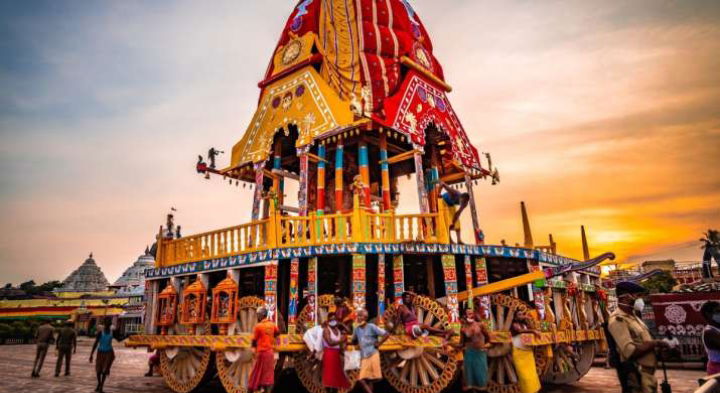History of Hindu resilience in the land of Jagannath.


The indomitable Hindu spirit in the land of Jagannath. Read the story of tyranny of Aurangzeb and how Rathyatra and Jagannath worship was restarted post his death. Taj Mahal was built with around 3.2 crore rupees. In Mughal period the annual pilgrimage tax from Puri Jagannath temple was around 9 lakh. This is coroborated in several sources including some Mughal sources as well. To put this into perspective we can say in 35 years. The tax collected from Puri Jagannath temple could have completely recovered the money spent in “The greatest wonder ” of the world. So, you can assume this 9 lakh was a huge amount in those days. Ideally it is said that wealth is the biggest motivation behind any ruler’s policy. Considering that when Odisha was under Mughal occupation, the Mughal rulers would have let the pilgrimage continue. However, in 1692/82, Aurangzeb ordered the demolition of the temple and the Murtis of Mahaprabhu Jagannath.
Khordha Bhoi Gajapati Divyasingha Deva was unable to resist it and rather bribed the Mughal officer and sent a fake murti of Mahaprabhu Jagannath to Bijapur where Aurangzeb was campaigning in the month of May 1692.That murti was said to be placed in the steps on way to masjid. The original muri was hidden in the temple compound in Bimal temple and later for safety moved out of Puri. This caused complete shutdown of temple and all its rituals and flow of pilgrims stopped completely for 15 years, some sources say for 25 years.So around 1.35 crore or 2.25 crore rupees of revenue was sacrificed by Aurangzeb for his hatred for Hindus and Hinduism. That will be around 42% to 70% of entire cost of Tajmahal.
He did all these in cold blood, that means there were no wars that Odia Hindus were fighting at that time with Mughals. The last war(rebellion) in 1660s was probably the biggest one which was suppressed with iron hand. So, no logic whatsoever fits this farman by the emperor (many left leaning historians tend to propagate the idea that attacks on temples happened to take revenge on the rebel leaders or to loot wealth from temple). It was a religious war to destroy idoltry as per his scriptural sanction provocation or not doesn’t matter. This was probably the saddest period of Odishan history.
Well, like tons of stories of indomitable Hindu spirit, this story also has a happy ending. In 1707 Aurangzeb died. The Odias again rose to rebellion. The anger was lingering since long and the Khandayat warriors were waiting for a suitable moment to strike. The death of Aurangzeb provided them the opportunity. The Khordha Bhoi Gajapati Divyasingha Deva along with his 18 other Zamindars assemblled a large Paika forces of Odia hindus spearheaded by Khandayat Warlords. A battle ensued in the holy land of Puri to free it from the Yavan occupation and bring back Mahaprabhu Jagannath to Srikshetra Dham. The Mughals had weakened by then and were defeated and kicked out of Puri. The Sri Mandira was freed after 15/25 years. The millions of Hindus breathed a great sigh of relief. Mahaprabhu was back. The Rathyatra restarted. The atmosphere was not only of devotion but also an emotional one. The Hindu faith which time and again had shown an indomitable spirit proved itself once again that no Aurangzeb or any other Yavana could destroy us.
Credit – @Kalinga Arya
DISCLAIMER: The author is solely responsible for the views expressed in this article. The author carries the responsibility for citing and/or licensing of images utilized within the text.
